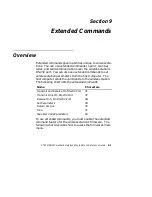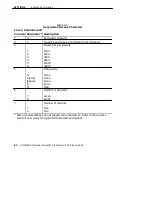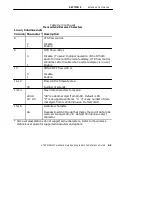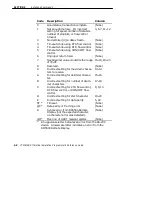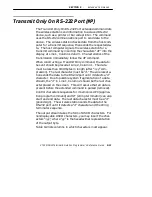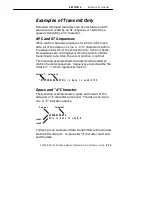
SECTION 8
"
Programming
8-70
VT220/ANSI Terminal Emulation Programmer’s Reference Guide
Use an extended form of DECTTC to select a string of char-
acters to indicate the end of a block. The extended form
uses decimal codes to represent characters. You can use the
extended form to send a control function at the end of a
block transmission, instead of a single character. You can
send a control sequence of up to six characters (Pn1
through Pn6) at the end of a block.
The control sequence is:
CSI ? Pn1 ;
¼
Pn6
ê
Pn1 through Pn6 are decimal codes for characters you can
define as end-of-block. For example, the decimal code for
ESC is 27 (1B hexadecimal). A code outside the range of 0
to 254 is ignored. The tables on pages 8-4 and 8-8 contain
decimal codes for characters.
For example, to send the default code of the PF1 key on the
wireless station’s numeric keypad at the end of a block
transmission, use the following procedure.
1. The PF1 key sends this default code:
ESC O P
2. Translate each character in the sequence to decimal
code.
ASCII characters:
ESC O P
Decimal codes:
27 79 80
3. Insert the decimal codes into the extended DECTTC
sequence:
CSI ? 27 ; 79 ; 80
ê
Summary of Contents for VT220/ANSI
Page 4: ......
Page 18: ...CONTENTS xiv VT220 ANSI Terminal Emulation Programmer s Reference Guide...
Page 26: ...SECTION 1 Introduction 1 8 VT220 ANSI Terminal Emulation Programmer s Reference Guide...
Page 264: ...APPENDIX A Bar Code Scanning A 4 VT220 ANSI Terminal Emulation Programmer s Reference Guide...
Page 276: ...INDEX Index 12 VT220 ANSI Terminal Emulation Programmer s Reference Guide...
















